
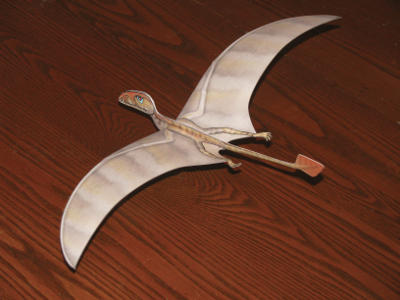
|

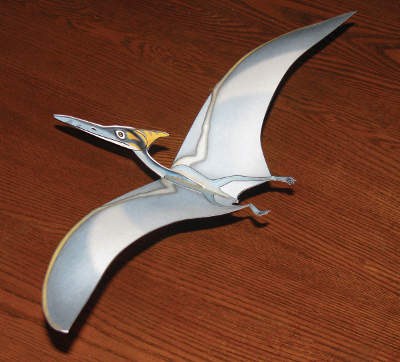
|

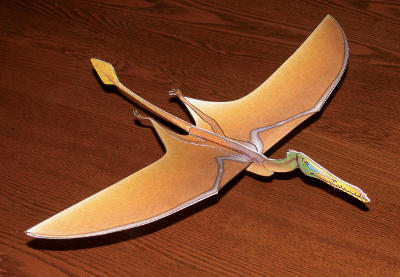
|
|
 |
How to Spot a DimorphodonThis Dimorphodon is currently hanging out in the Rigby folder. He has been a long time without a home, but if you don't already have him in your collection you should go there to visit him soon before he flies off to somewhere else. A fossil collector named Mary Anning first found fossil remains of Dimorphodon in England on a cold day in 1828. It soon got the name Pterodactylus macronyx of the genus Pterodactylus, and macronyx (from Greek makros, "large" and onyx, "claw") because it had big claws. The Dimorphodon is not a very common fossil, but if you are looking for one, you should definitely keep your eyes open for big claws! |
Hunting the Elusive RhamphorhynchusRhamphorhynchus (RAM fuh RING kuss) would be called a "beak snout" if paleontologists spoke English. This critter is a charming pterosaur from the Jurassic period. You can identify it because it has a long tail with a diamond-shaped rudder at the tip. His jaws have teeth like little needles pointing forward which he used for catching fish and insects. A baby Rhamphorhynchus, called a "flapling," can fly as soon as it emerges from the egg. This helps to keep it from being devoured by its parents. It also makes it a little harder to find, but it has been reported that one was recently spotted flying over the New England Village. If you have any models from that collection, you could check to see if it's there. |
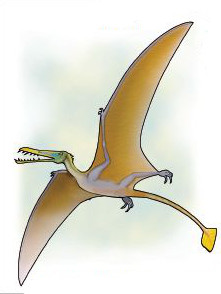
|
Two Choices of What to Do When Encountering a Pterodactyl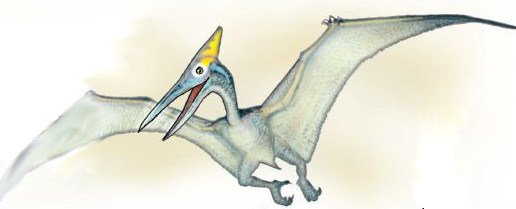
The pterodactyl could be anywhere. If you find this fellow in one of your model folders you will have two choices of what to do.
One: You could tell all your friends |
Information about PterosaursPterosaurs inspire imagination into the mind of anyone who thinks about them or looks at pictures of their remarkable beauty. That is why they are such a wonderful subject for artists. Here are a couple illustrations by Anthony Sanchez done using Pterosaurs as his inspiration. A great place to learn more about Pterosaurs is Pterosaur.net where you can spend hours researching them, and never get bored. It must be fun being a paleontologist. Some stories survive about brave knights and humble squires who have raised Pterosaurs after having stumbled across them when they were still in their eggs. Unfortunately, the proper conditions required for hatching a Pterosaur egg have never been recorded. |

|
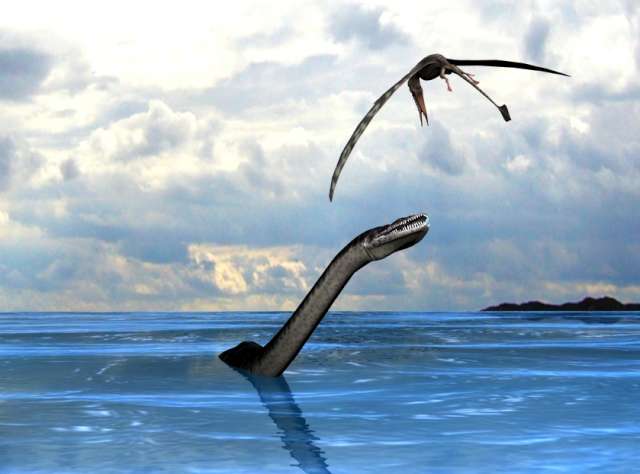 |
How to Eat a PterosaurIf you look closely at the remains of pterosaurs you might find velociraptor teeth embedded in their bones, and if you look carefully at the regurgitated contents of certain fishy or crocidillian predators, you may find tiny bits of pterosaurs there. Spinosaur bones and Pterosaur bones have also been found together, so you might start thinking that pterosaurs were pretty tasty to a lot of prehistoric critters. Answer: The best way to eat a pterosaur is quickly before someone else gets it! |
 |
How to Build Your Own PterosaurIf you can't find an egg, or if you don't have enough room to to make a nest for a pterosaur , then you can build one from paper and practice your dragonry in a more controlled environment. A pair of scissors and some regular white glue will be helpful, and the assembly instructions included with the model will help you to see how it all goes together. You should also get some help downloading and printing this model on your printer. If it doesn't come out quite right, then have no fear, because you can always print out another one and build it again until it comes out the way you want it to. |

|
Aerodynamics of a Pterosaur (FG Flight Lesson)We're not sure how to pronounce it, but the arm-wing is called a brachiopatagium. It created enormous aerodynamic forces to propel this graceful creature and support its weight in flight. Unlike bird wings, the wings of pterosaurs changed shape under aerodynamic load (also referred to as 'passive cambering'.) Camber is the curvature of a wing in cross section. The membrane of a pterosaur wing was elastic, which allowed the wing to stretch when producing fluid forces (lift and drag). This stretching caused the wing to bow, which increased camber. Muscles may have helped to provide variable camber over the wing. The shape of the pterosaur wing produced wonderful lift coefficients. A pterosaur wing, when allowed to passively camber during flight, achieved lift coefficients of nearly 2.0 for short periods of time, and that's a lot for a large flying animal. A large bird will usually max out at a CL of about 1.6 or less. The lift coefficient, because of unsteady mechanisms, may have been even higher for some pterosaur species, especially in smaller ones. People who study bats have shown how this can provide incredible lift coefficients (see work by Sharon Swartz and colleagues). You can learn more about Pterosaur flight at Pterosaur Flight |
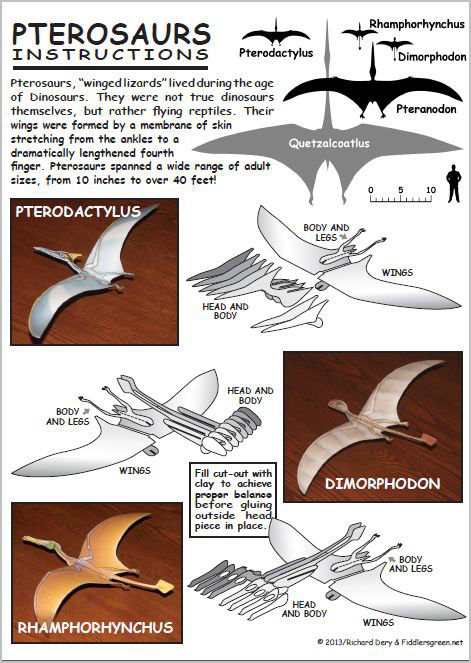
|
Learn how to draw a dragon by watching these videos.